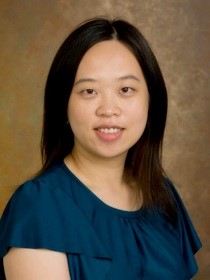1月14日:杨乘默
发布时间:2019-01-10 浏览量:2662
报告题目:Domain Wall Memory: is it the technology to replace CMOS in future embedded and IoT devices?
报告人: 杨乘默 美国德拉瓦大学
主持人: 石亮 教授
报告时间:2019年1月14日 周一15:00-16:00
报告地点:中北校区数学馆201
报告人: 杨乘默 美国德拉瓦大学
主持人: 石亮 教授
报告时间:2019年1月14日 周一15:00-16:00
报告地点:中北校区数学馆201

报告摘要:
Domain Wall Memory (DWM) with ultra-high density and comparable read/write latency to DRAM is an attractive replacement for CMOS-based devices. Unlike DRAM, DWM has non-uniform data access latency that is proportional to the number of shift operations.While previous works have proposed different ways to alleviate the impact of shift operations, we considered the problem from a different perspective. Our first work addresses the performance-critical page table accesses. We propose a new page table layout and leverage the positions of access ports in DWM to differentiate the state of page table entries. Our second work leverages DWM to implement a stack architecture. The sequential access structure of DWM makes it well suited for a stack whose accesses display high temporal locality. We further improve stack performance through novel data placement and micro-code transformation optimizations.
Domain Wall Memory (DWM) with ultra-high density and comparable read/write latency to DRAM is an attractive replacement for CMOS-based devices. Unlike DRAM, DWM has non-uniform data access latency that is proportional to the number of shift operations.While previous works have proposed different ways to alleviate the impact of shift operations, we considered the problem from a different perspective. Our first work addresses the performance-critical page table accesses. We propose a new page table layout and leverage the positions of access ports in DWM to differentiate the state of page table entries. Our second work leverages DWM to implement a stack architecture. The sequential access structure of DWM makes it well suited for a stack whose accesses display high temporal locality. We further improve stack performance through novel data placement and micro-code transformation optimizations.
报告人简介:
杨乘默,美国特拉华大学副教授,终身教授,博士生导师。于北京大学获的本科学士学位,于美国加州大学圣地亚哥分校获的硕士和博士学位。现就职于美国特拉华大学电子和计算机工程系,并曾在清华大学高精尖中心任高级访问学者。在国际顶级期刊杂志上发表论文70余篇,担任IEEE,ACM等多种学术期刊的评审和DAC,DATE, ICCAD, CODES-ISSS, ICCD, LCTES等会议的评审委员。主要研究方向包括嵌入式系统,计算机体系结构,硬件可靠性和硬件安全,非易失性存储等。
杨乘默,美国特拉华大学副教授,终身教授,博士生导师。于北京大学获的本科学士学位,于美国加州大学圣地亚哥分校获的硕士和博士学位。现就职于美国特拉华大学电子和计算机工程系,并曾在清华大学高精尖中心任高级访问学者。在国际顶级期刊杂志上发表论文70余篇,担任IEEE,ACM等多种学术期刊的评审和DAC,DATE, ICCAD, CODES-ISSS, ICCD, LCTES等会议的评审委员。主要研究方向包括嵌入式系统,计算机体系结构,硬件可靠性和硬件安全,非易失性存储等。
快速通道:


